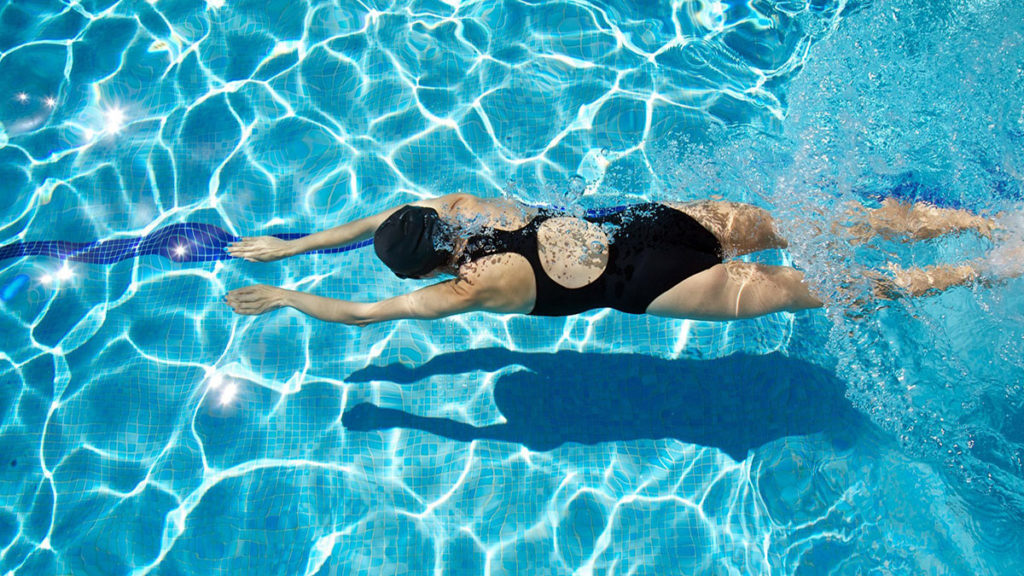Uncover the Water Workout: Does Swimming Help You Lose Weight?
In seeking effective and enjoyable ways to shed those extra pounds, swimming has become a popular choice for many fitness enthusiasts. But does swimming help you lose weight? This question has sparked curiosity among those seeking a low-impact, full-body workout combining cardiovascular benefits and muscle toning.
In this exploration, we’ll dive into the science behind swimming as a weight loss tool, discussing its potential benefits and considerations. So, if you’re eager to discover whether the pool can be your path to weight loss success, let’s take the plunge into the world of swimming and its impact on shedding those unwanted pounds.
How Swimming Burns Calories

Swimming is an excellent full-body workout that can help burn calories and promote overall fitness. The number of calories burned while swimming can vary depending on various factors, including your weight, the intensity of the swim, and the stroke used. Here’s how swimming burns calories:
1. Whole-Body Engagement:
Swimming engages multiple muscle groups throughout your body. Different strokes, such as freestyle, backstroke, breaststroke, and butterfly, target various muscle groups, providing a comprehensive workout. This simultaneous engagement of muscles leads to increased energy expenditure.
2. Resistance:
Water provides natural resistance, making it more challenging to move through than air. This resistance forces your muscles to work harder, burning more calories as a result.
3. Cardiovascular Exercise:
Swimming also provides an effective cardiovascular workout. When your heart rate increases during swimming, you burn calories to fuel the activity. Swimming at a moderate to high intensity can elevate your heart rate and help you burn more calories.
4. Endurance Building:
Swimming for an extended period of time can help improve your endurance. Longer swim sessions require more energy expenditure, resulting in more calories burned.
5. Thermoregulation:
When immersed in water, Your body maintains a stable core temperature, which can increase calorie burn. This is because your body needs to work harder to stay warm in cooler water or maintain temperature in warmer water.
6. Interval Training:
Incorporating high-intensity intervals, where you swim faster for short bursts and then recover slower, can increase calorie burn. These intervals can elevate your heart rate and increase the overall intensity of your swim.
The Benefits of Swimming for Weight Loss
Swimming is not only a refreshing and enjoyable activity, but it also offers numerous benefits for weight loss. Unlike other forms of exercise, swimming provides a low-impact workout that minimizes joint stress. This makes it an ideal option for individuals with joint pain or those who are overweight and looking for an effective way to shed extra pounds. Swimming also engages multiple muscle groups simultaneously, including the upper and lower body. This means you can effectively burn calories and tone your muscles simultaneously.
One unique advantage of swimming as a weight loss exercise is its ability to keep you cool while providing an intense workout. The water’s buoyancy supports much of your weight, eliminating impact on your bones and joints while allowing you to push your muscles further.
Compared to activities like jogging or high-intensity interval training (HIIT), which can leave you feeling hot and sweaty in no time, swimming keeps your body temperature regulated thanks to the cooling effect of the water. Not only does this make swimming more comfortable than many other exercises, but it can also allow for longer and more consistent workouts, ultimately leading to greater calorie burn.
Lastly, swimming offers mental health benefits that contribute positively to weight loss efforts. Jumping into a pool can be exhilarating and refreshing; the sensation of being submerged in water often has a calming effect on both mind and body. While any form of physical activity releases endorphins that boost mood, there is something uniquely refreshing about being surrounded by cool
The Impact of Swimming on Muscle Tone
Swimming can have a positive impact on muscle tone and overall muscular development. The specific impact on muscle tone will depend on various factors, including the type of stroke, swimming technique, and the frequency and intensity of your swim workouts. Here’s how swimming can affect muscle tone:
Full-Body Workout:
Swimming engages multiple muscle groups throughout your body. Different strokes work different muscles. For example, freestyle and backstroke primarily engage the muscles in the upper body, while breaststroke and butterfly involve more of the lower body and core muscles. This comprehensive muscle engagement can lead to improved muscle tone in various areas.
Resistance Training:
Water provides natural resistance, making it a great environment for resistance training. When you swim, your muscles must work against the resistance of the water, which helps tone and strengthen them. This resistance can be adjusted by varying your swimming speed and the type of stroke you use.
Cardiovascular Conditioning:
While swimming is excellent for muscle tone, it’s also a cardiovascular exercise. Engaging in cardiovascular activities like swimming can help reduce body fat, enhancing the visibility of toned muscles. Reducing body fat through swimming can help define and sculpt muscles.
Endurance Development:
Swimming for extended periods of time can improve muscular endurance. As your muscles become more accustomed to sustained effort, they’ll become more toned and less prone to fatigue.
Potential challenges and Considerations For Swimming
Swimming can be an effective weight loss activity but it comes with challenges. First, calorie estimation can be imprecise, making it crucial to manage dietary intake. Consistency and duration are key; maintaining a regular swimming routine can be challenging.
Chlorine exposure can affect skin and hair. Additionally, swimming may increase appetite, so managing post-workout eating is vital. Access to a pool is necessary, and some may find it inconvenient. Finally, the buoyancy of water can reduce weight-bearing stress, which might not be ideal for individuals seeking to increase bone density. Combining swimming with a balanced diet and other forms of exercise may optimize weight loss efforts.
Final Thoughts
In conclusion, swimming can be an effective exercise for weight loss. It is a low-impact activity that engages multiple muscle groups and burns calories. Regular swimming sessions can help to improve cardiovascular fitness and increase metabolism, leading to weight loss over time.
However, it is important to note that diet and overall lifestyle choices also play a significant role in achieving weight loss goals. Therefore, combining swimming with a healthy eating plan and other forms of exercise is recommended for optimal results. So why not dive in and start reaping the benefits of swimming for weight loss today?
FAQs
Q: How often should I swim to see weight loss results?
A: Swimming at least three to four times a week for about 30-60 minutes per session is recommended to achieve noticeable weight loss through swimming.
Q: Can I lose belly fat by swimming?
A: Swimming is a full-body workout that engages multiple muscle groups, including the core. Regular swim sessions and a balanced diet can help reduce overall body fat, including belly fat.







